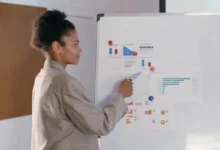It is essential for an individual to possess effective problem-solving skills, especially when navigating the complexities of financial and career challenges. The goal of this article is to offer strategies that go beyond the conventional approaches and understand the world of creative solutions.
Understanding the Importance of Problem Solving
Before we outline the strategies, let’s take a moment to reflect on why problem-solving skills are crucial, particularly in the context of financial and career endeavors. Whether you’re facing a financial setback, a career dilemma, or a combination of both, the ability to tackle problems head-on is a valuable asset.
1. Financial Resilience
Discussing the importance of being financially resilient and how problem-solving plays a role in overcoming unexpected financial challenges.
Real-life examples of individuals who turned financial setbacks into opportunities through innovative problem-solving.
2. Career Advancement
Exploring how effective problem-solving can be a catalyst for career growth. Highlighting success stories of professionals who stood out by their ability to navigate and solve complex workplace issues.
Strategies for Creative Problem Solving
Practical strategies can enhance your problem-solving skills and empower you to face challenges with a creative mindset. Below are a few tips
1. Mind Mapping for Clarity
Define problem-solving through mind mapping, emphasizing its visual nature.
Share tips on creating mind maps for financial planning and career development.
Examples of how mind mapping can unravel complex problems into manageable components.
2. Collaborative Problem Solving in the Workplace

Discuss the power of teamwork in problem-solving, especially in a professional setting.
Tips on fostering a collaborative problem-solving culture in the workplace.
Case studies illustrating successful outcomes achieved through teamwork.
3. Embracing Creative Thinking Techniques
a. Introduce creativity as a problem-solving tool.
b. Explore techniques such as brainstorming, reverse thinking, and lateral thinking.
c. Highlight how creativity can reshape financial strategies and career decisions.
4. Utilizing Technology to Streamline Solutions
a. Discuss the role of technology in modern problem-solving.
b. Showcase applications and tools that can aid in financial planning and career management.
c. Real-world examples of individuals leveraging technology for innovative solutions.
5. Learning from Failure
a. Encourage a positive perspective on failure as a stepping stone to success.
b. Share stories of renowned personalities who faced setbacks and emerged stronger.
c. Discuss the importance of resilience in financial and career journeys.
Putting Strategies Into Action
Now that you have a toolkit of problem-solving strategies, it’s time to put them into action.
1. Create Your Mind Map: Use the mind mapping technique to visually organize your financial goals and career aspirations.
2. Engage Your Network: Reach out to colleagues, mentors, or friends for collaborative problem-solving sessions.
3. Host a Creative Thinking Session: Organize a brainstorming session to generate innovative solutions for a specific financial or career challenge.
4. Explore New Technologies: Research and implement technology solutions that align with your financial and career objectives.
5. Embrace Setbacks as Learning Opportunities: Reflect on past setbacks, identify key lessons, and apply them to current challenges.
Conclusion
Elevating your problem-solving skills is not just a professional necessity; it’s a transformative journey that can redefine your financial and career trajectory. By adopting these strategies and approaching challenges with a creative mindset, you’re equipped to navigate the complexities of today’s dynamic world.









